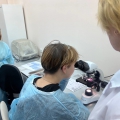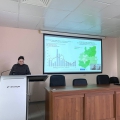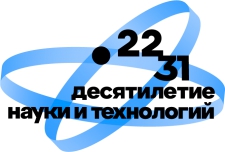On the development of a chimeric immunotoxin
Print versionNizhny Novgorod Research Institute of Epidemiology and Microbiology (Rospotrebnadzor) has received a patent for an innovative development that could help develop new cancer treatments. Using genetic engineering, a laboratory-scale prototype of a chimeric immunotoxin that destroys cancer cells has been developed.
The immunotoxin consists of a fragment of a rotavirus protein with a targeted toxic effect on cells and a nanoantibody that binds to a unique tumor marker. Laboratory tests have demonstrated high efficacy in destroying cultured tumor cells carrying the MUC1 tumor marker on their surface.
The nanoantibodies, despite their small size, have the ability to penetrate even the most inaccessible areas of the tumor cell surface, thereby enhancing the immunotoxin's effectiveness. Nanoantibodies are capable of directing an immunotoxin to the surface of cancer cells that cause oncological processes in the intestines and breasts, while a fragment of the rotavirus protein, called NSP4, specifically programs cell death, destroying the tumor.
The immunotoxin is currently classified as a laboratory model, is experimental in nature, and is not currently intended for therapeutic use.







